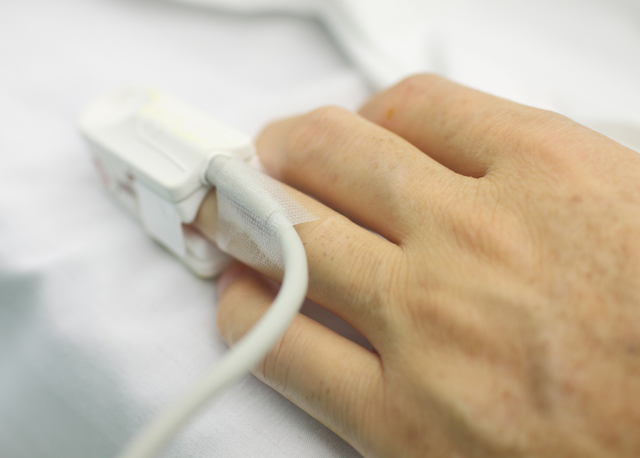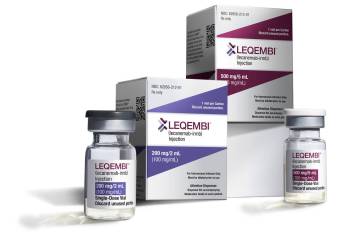That device on your finger reveals much about blood oxygen
You’ve surely seen them when you’ve gone to the emergency room or were admitted to the hospital or even just had an outpatient procedure: a plastic clamp that the nurse attached to your index finger that seemed to give readouts of … well, something, right?
The device is called a pulse oximeter, and it serves as a noninvasive, painless way to measure oxygen in your blood.
Pulse oximeters were invented during the 1970s, and “we’ve been using them on a regular basis since the 1980s,”says Dr. Paul Kalekas, chairman of Touro University Nevada College of Osteopathic Medicine’s primary care department.
By directing alternating pulses of red light and infrared light through your fingertip, the device “measures how much of your hemoglobin is saturated with oxygen,” Kalekas says.
Oxygenated hemoglobin absorbs infrared light and lets red light pass through, according to Kalekas, while hemoglobin that isn’t oxygenated absorbs red light and lets infrared through. By comparing the relative absorption of both, oxygen saturation of the blood can be determined.
Before pulse oximeters, the only way to determine oxygen saturation in the blood was to do an arterial blood gases test, which requires withdrawing blood from an artery with a needle and then running the blood through a machine.
“We still do that, but that, obviously, is a little more painful, more cumbersome and more expensive,” Kalekas says. “It gives us more information, but we can’t do that on a regular basis.”
Besides being painless and noninvasive, pulse oximeters “give you up-to-date, minute- by-minute (results),” Kalekas adds.
Generally speaking, anything between 92 and 99 percent saturation is considered normal, Kalekas says, while lower oxygen saturation percentages can be a sign of some sort of breathing problem, a heart attack or pneumonia.
What’s important isn’t the number at any particular moment, Kalekas adds.
“What we’re looking for (are) trends.”
Home pulse oximeters can be purchased for about $50, and there even are oximeter apps for the iPhone available. However, Kalekas says otherwise healthy people would have no reason, beyond, maybe, idle curiosity, to buy one.
However, Kalekas says, people who use home oxygen or who have such conditions as emphysema or chronic obstructive pulmonary disease may find them useful.
“If your oxygen saturation is below 88 percent, you qualify for home oxygen,” he says. “Below 88 percent, we start to have physical changes to the heart and lungs that are not advantageous. So the idea is to keep it up over 90.”
Meanwhile, thanks to the pulse oximeter’s noninvasiveness and convenience, blood oxygen saturation “in many ways, in the hospital, it’s become another vital sign,” Kalekas says.




























